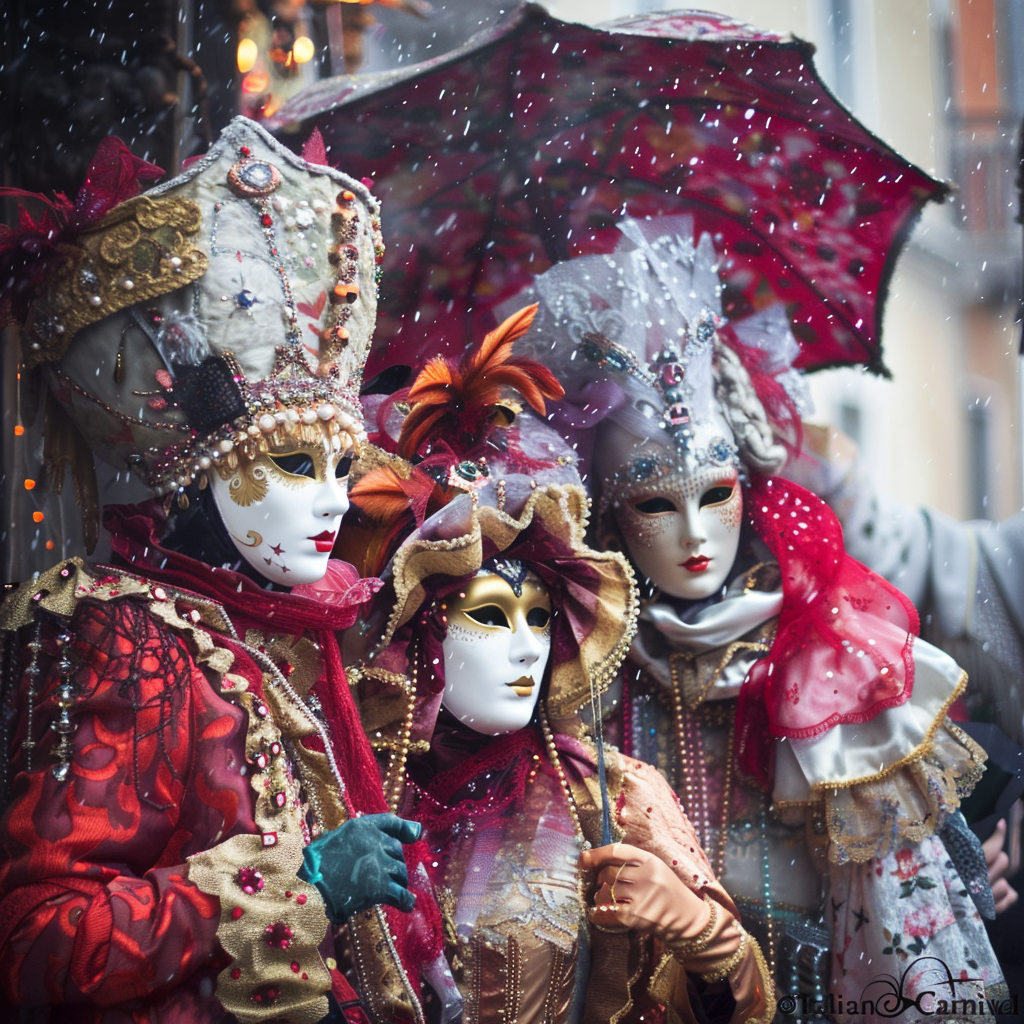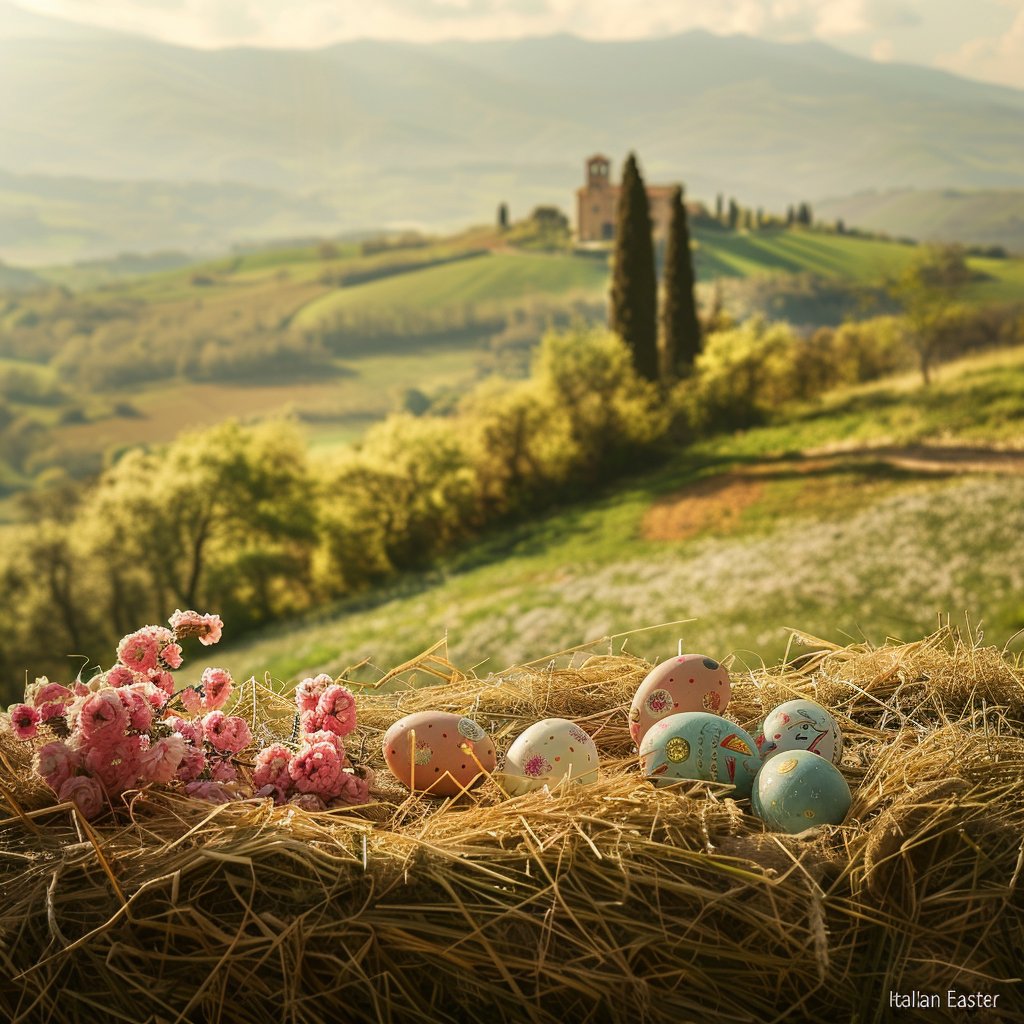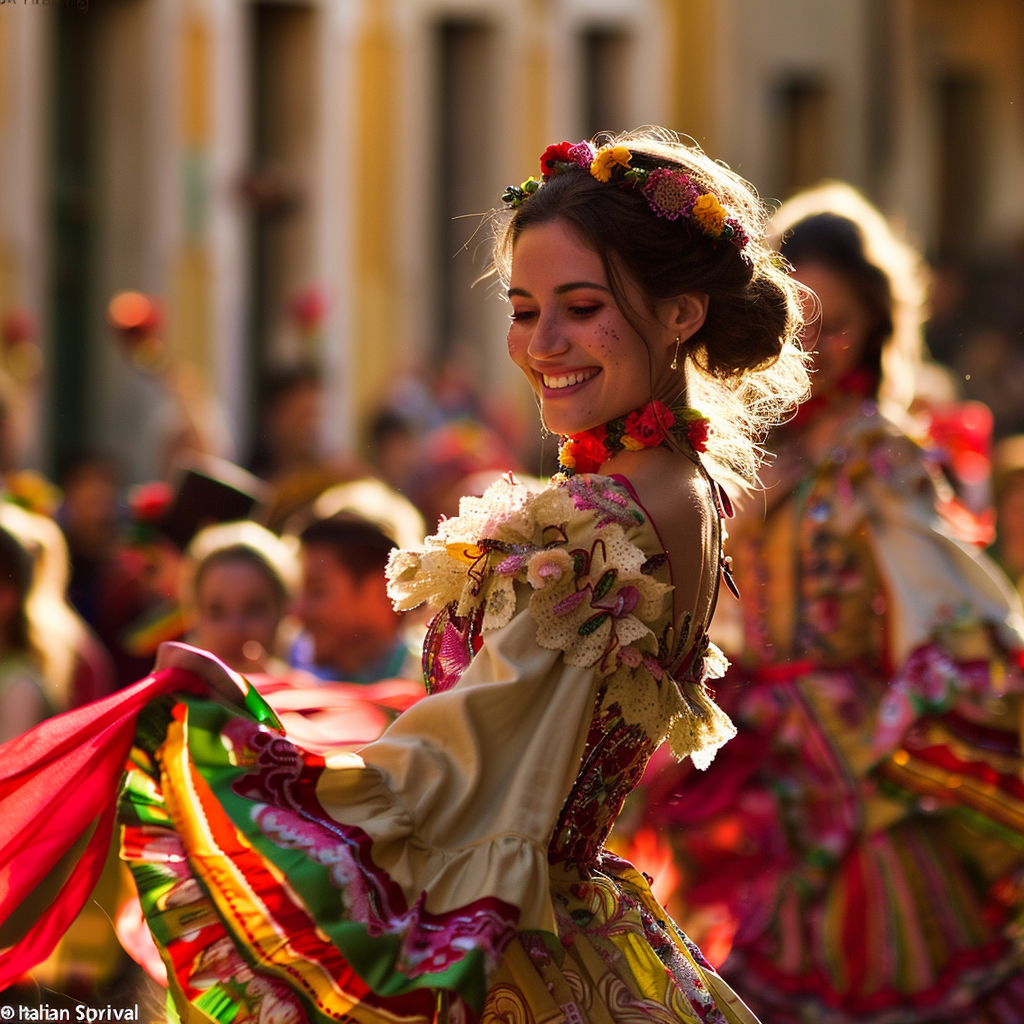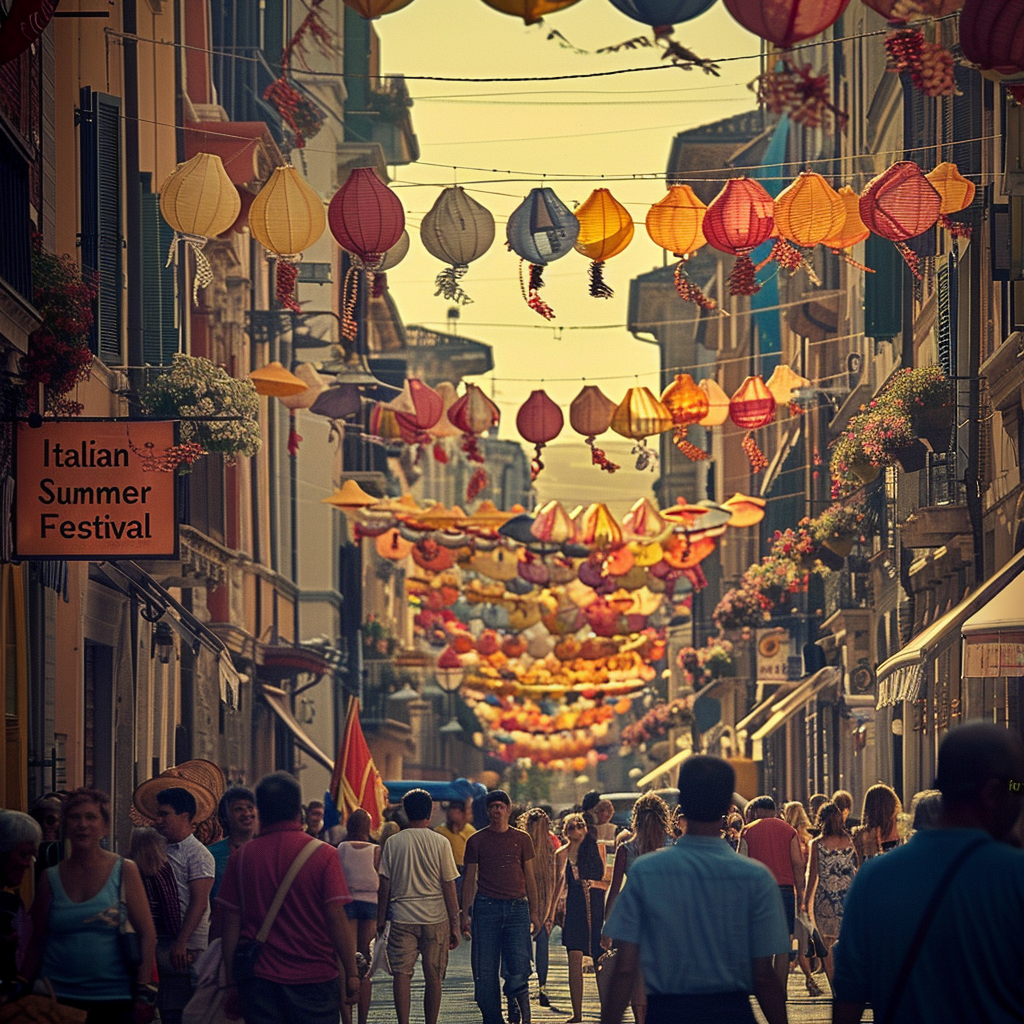The names of the Italian calendar and days of the week are derived from the names of pagan gods and Christian saints, showing that tradition is deeply embedded in Italian culture. Festivals and rituals also reflect these traditions.
Myths and saints in the Italian calendar
If you look at the Italian calendar, you’ll notice that several months are still named after pagan gods. For example, January (gennaio) is named after Janus, the god of war, and March (marzo) honors the military god Mars. May (maggio) comes from the Roman Republic’s Maius, who is believed to have been named after the goddess Maia, and June (Giugno) is named after the goddess Juno. The same goes for the names of the days of the week.
Monday (Luned) is the day of the moon and Tuesday (martedì) is the day of Mars. Wednesday (Mercoledì) is the day of Hercules, Thursday (Giovedì) is the day of the god Jupiter, and Friday (venerdì) is the day of Venus. On the other hand, Saturday, Sabato (Sabbath), is the day of the Judeo-Christian gods, and Sunday, Domenica, honors the Christian God, meaning Lord’s Day.
You can see that astrology, paganism, Judaism, and Christian heritage are all interwoven in these names, and it’s a clear example of how deeply embedded tradition is in Italian culture.
However, as Christian saints gradually replaced pagan gods, the names of Christian saints began to take over the calendar. As you can see from most calendars in Italy, every day is given the name of one or more patron saints who protect land, jobs, and people. Christmas has replaced the Roman ritual of celebrating the sunrise, and the feast of the Assumption of the Virgin has replaced the festival of Augustus in Rome.
Different professions have their own patron saints, from farmers, who worship St. Isidoro, to doctors, who serve Saints Cosmas and Damianus. Advertisers have St. Bernardus as their patron saint, photographers have St. Veronica, carpenters have St. Joseph, and motorists have Christophorus.
Of course, not all Italians venerate the saints, and there is much variation in the degree to which they do, but the tradition continues, and acts to gain the favor and grace of these intercessors are expressed in many ways in our daily lives.
Meanwhile, some saints are recognized as more specialized protectors. Santa Lucia is the patron saint of the eyes, St. Agatha is the patron saint of women’s breasts, and St. Dominic is the patron saint of teeth. These specialist saints become more specialized the further you go into the region.
In Apuglia, for example, St. Donatus is a saint for epilepsy, St. Markus is a saint for sore ears, St. Paulus is a saint for dog or spider bites, St. Pantaleus is a saint for boils, and St. Benancius is a saint for rheumatism.
Cities and small towns also have their own patron saints. Milan’s patron saint is St. Ambrosius, Naples has St. Gennaro, Venice has St. Marco, Florence has St. John the Baptist, Palermo has St. Rosalia, Assisi has St. Francis, Siena has St. Caterina, and Bari has St. Nicholas. Each city honors these saints with grand festivals.
In Italy, as elsewhere, the yearly cycle is marked by festivals. First, the equinoxes and autumnal equinoxes, the winter and summer solstices are celebrated, with rituals based on the ancient agrarian society. Then there are the Christian festivals, which are characterized by various religious rituals and processions, feasts with sacred and traditional foods, markets, and races. Italians living away from home never miss this opportunity to reaffirm their still strong ties to their homeland.
Civic pride, religious heritage, and a desire for community identity are the main factors that explain Italians’ love of festivals. Many of these festivals have remained unchanged since the time of the Roman Empire and the Renaissance. Of course, not all of the 182 festivals that were celebrated in Roman times have been preserved, but many of them have been intertwined and intermixed, and are still celebrated today in the name of tradition.
The New Year
The year begins with the festival of Epiphany. For the past three centuries, January 1 has been the official start of the year, but Italian tradition has it that the 12 days between Christmas and Epiphany mark the beginning of the year. Epiphany, the last day of this period, is symbolized by an old woman named La Befana, just as Christmas is symbolized by Santa Claus. In Italy, it is believed that on the night of January 5, this old woman rides around on a donkey, climbs down chimneys, and brings gifts to children who hang their stockings by the hearth. On the same night, children dressed as old people (befani) go from house to house, wishing people good luck for the new year and accepting small gifts or money, much like the Anglo-Saxon celebration of Hallowe’en.
However, this tradition in Italy has its origins in the traditional ritual of rinovatio temporis, where people honored their deceased ancestors by giving them symbolic gifts. This symbolic gift exchange also leads to a buying frenzy during the sales season, which begins after Epiphany in most cities. Italian women usually only window shop, but during saldi, they buy clothes, and the whole country goes into a spending frenzy. However, in recent years, the atmosphere has changed. This is because the Belsani Law for Commercial Reform (Decreto legislativo n.114/98) came into effect, shortening the sales period to no more than eight weeks and allowing provinces and municipalities to determine the timing, but also because the winter sales period during this period has decreased and the timing varies from region to region, so the atmosphere is not as exciting as it used to be.

Carnivals
After the New Year’s festivities, it’s time for carnival. Carnival symbolizes the rejuvenation of nature and community after a period of turmoil. Carnival celebrations, which take place across Italy between mid-February and early March, have been around since ancient Rome. Carnival was a religious ritual based on animistic and shamanistic beliefs, in which farming peoples wore masks of animals they considered sacred to gain supernatural powers to ward off evil spirits. When Christianity was recognized as the state religion during the Roman Empire and began to spread, it was adopted as a means of appeasing non-Christians in the process of converting pagans, and later became a Catholic tradition.
However, Carnival was not originally a Catholic ritual, as mentioned above, but it does coincide with the period before Lent. In Italy, carnivals begin on the day of Pentecost and last until the so-called “Shrove Tuesday” (Martedì Grasso), the day before Lent.
The main carnivals are the Carnival of Venice, famous for its masks and colorful medieval costume processions, where the masks made to cover the faces of the plague dead are transformed into unique images; the Carnival of Viareggio, famous for its allegorical giant masks of politicians and celebrities and its processions of horse-drawn carriages; and the Carnival of Ibrea, where thousands of boxes of oranges are thrown to create a battle.
We already mentioned in Part 1 of Poison that the word carnival comes from a Latin word meaning “abstinence from meat”. In current Italian, it means “togliere la carne” (to remove the meat).
However, this does not mean that meat is abstained from during Carnival, but rather that after ten days of joyful festivities, the last day of which is literally “Shrove Tuesday”, a day of hearty food, including meat, the next day, “Ash Wednesday” (Mercoledì delle Ceneri), is a day of very frugal eating, after which, as a ritual of accounting, ashes from the olive trees and branches burned on Palm Sunday of the previous year are sprinkled on the head. This period coincides with the Christian season of Lent, and Catholics abstain from eating meat during this time.
It’s considered natural for Christians to eat sparingly and frugally as a form of accounting for the suffering of Jesus and the Easter that follows Lent.
However, carnivals in ancient times were not about accounting, but rather about gathering all the food that was left over after the farming season and eating the food stored over the winter, and eating it in a big festival before starting work again in the spring. In an agrarian society, animals that were important for plowing the fields could not be eaten at the beginning of the day, so eating meat after Carnival would have been a social evil in some ways.
Now, many of the pagan traditions of Carnival are long gone. But Lent is still not just a time of suffering and accounting. The “segalavecchia” rituals that take place during Lent also help to energize this otherwise dull and boring period. The ritual involves splitting the body of a puppet in the shape of an old hag, representing Lent, in two and pulling out candy, sausages, eggs, and other goodies to celebrate the bounty of the land after a long winter.

Easter
The idea of resurrection from the dead is common in many other religions, but it’s Christianity’s Easter that best reflects this as a ritual. In Italy, several medieval rituals are celebrated apart from the customary rituals of Good Friday (the anniversary of Christ’s Passion, the Friday before Easter). In places like Nocera Trinese in Calabria and Guardia Sanframondi in Campania, the ritual of the procession of confessors has survived. These ascetics show their gratitude for Christ’s sacrifice by inflicting pain on their bodies with whips. In several places in Sicily, events are organized to reenact Christ’s entry into Jerusalem and his Passion on Golgotha Hill. In Trapani, in the western part of the island, the Misteri di Trapani ceremony takes place, which includes the “Dance of the Devils” in Prizzi and a reenactment of the Passion in Marsla. The Easter festivities end with a traditional outdoor picnic on Monday, the day after Easter Sunday.

Spring festivals
May is a month that celebrates the rebirth of nature. Many of the modern festivals celebrated in May reflect the very ancient ritual of asking nature to shower humans with new energy, and the protagonists of these festivals are, of course, young people. Everywhere there are festivals of cantare maggio (to sing May), where young men and women go around the town singing, and there are often pageants to choose the May queen and king among the young people of the town. May is also the month of marriage. In Italy, many brides and grooms choose to get married in May, believing that it brings good luck.
Among the festivals that take place in spring, an interesting one is the one that involves carrying heavy poles. The most famous of these rituals, which are believed to have pagan origins, is the Cherry Festival in Gubbio, which, along with Assisi, contends for the title of the first medieval city in Umbria. The festival consists of a competition to see who can carry three octagonal wooden poles called cherries, each weighing 400 kilograms and five meters high, with a stretcher, up the hill to the church of Ubaldo, the patron saint of Gubbio. This type of festival, which can be seen as a kind of devotion to the gods, can also be found in Viterbo in Lazio and Nola in Campania.

Summer festivals and food festivals
In the summer, most cities and towns reminisce about their golden age and hold festivals, believing that their hometown was culturally and economically richer than any other during the period of independent city-states. During the festival, markets are held, parades are staged, and competitive events such as horse racing, jousting, and mock battles are held against each other on a regional basis.
The highlight of the festivities in Florence is undoubtedly the “Calcio,” a competition unique to Florence. It”s a type of soccer in which burly men dressed in traditional garb compete with each other for a ball, but it”s very different from modern soccer. There’s no single word to describe ‘calcio’, but it’s best described as a mix of regular soccer, American football, rugby, and Greco-Roman wrestling.
Siena’s signature festival is a medieval celebration called the Palio, which takes place twice throughout July and August. The festival divides the city into 17 neighborhoods, each of which sends a representative to compete in horse races, with the owners of the horses themselves participating in the races and competing in a spectacle that resembles a cigar fight. These regions prepare for these races throughout the year. Two races in particular, on July 2 and August 16, are the highlight of Siena’s summer festivities. The Palio is said to have originated in 1283, when the people of Siena celebrated the great feast of the Virgin Mary, the city’s patron saint.
Outside of Siena, other festivals that feature horse racing include Ferrara’s Feast of the Immaculate Conception race on August 15, the Quintana race in Ascoli Piceno in the Marche region, and the Pal io dei Normanni in southwestern Sicily on August 6.
Italians take food very seriously, and as a reflection of this, the country is home to a number of food-related festivals. Over the course of a year, there are nearly 400 of these festivals, held almost every month. Food festivals are often celebrated in addition to Christian feasts or the feast days of old saints, but they are also held to show off the specialties of each region.
During the Feast of San Lorenzo on August 10, Benevento, in Campania, offers special bread and wine to coincide with the famous shooting star viewing period, when shooting stars fall like meteors. The shooting stars on the feast of San Lorenzo are called the “Tears of San Lorenzo” in Italy, and they are a beautiful reminder of the past.
On the first Sunday of November, the town of Trevi in Umbria hosts the Festa dei Condimenti, a festival celebrating the grape harvest and the new olive oil that is pressed. This is when you can enjoy the distinctive aroma and taste of the pressed olive oil. In Matera, the bell pepper festival is celebrated, and in Piedmont, the truffle festival. Alba, a small town in Piedmont, is particularly famous for its truffle festival. The white truffles of Alba are so famous among gourmets that the period from mid-September to mid-December, when the truffles are harvested, is the most important period of the year.
The grape harvest and wine during the fall season is one of the most important things for wine-loving Italians. Among the many wine festivals throughout the country, the biggest ones are the Montepulciano and Montepaschi wine festivals in Tuscany, the Valpolicella festival in Verona in the Veneto region, and the Cinquefrondi wine festival in Calabria.

Fall festivals and Christmas
October and November are the months of grape harvest and wine festivals, followed by festivals celebrating the specialties of each region. While the northern regions of Italy celebrate San Martin, the southern regions celebrate San Martino. This festival is mainly celebrated in the south of the country, where boys go door-to-door to collect sweets and candy. In southern Italy, it’s customary to eat acorns or chestnuts while drinking wine on St. Martino’s Day. This is likely due to the fact that in southern Italy, St. Martino is referred to as “opera” along with “Giuseppe.” The Palio dei Normanni race in southwestern Sicily is also a big part of the festival.
All Saints’ Day, celebrated at the end of October, is a time to remember those who have died during the year and to pray for the health of the remaining family members. In Italy, a predominantly Catholic country, tradition dictates that families honor the dead on All Saints Day by lighting candles and saying blessings for the health of the family.
Unlike Korea, where Christmas is mainly about Santa Claus giving gifts to children, Italy celebrates the birth of Jesus. In Italy, Santa Claus is supposed to give gifts on Epiphany, January 6, and the birth of Jesus is the main event. Families celebrate the birth of Jesus at midnight on December 24, singing songs, sharing food and wine, and rejoicing. Christmas lasts for two weeks, from December 25 to January 6, and it’s traditional to spend this time with family. In addition, Italian families buy a special bread called Panettone from the bakery at Christmas time and share it with each other.
Thus, Italians spend a warm time with their families during this time, reflecting on the meaning of family and blessing each other. For Italians, the most important tradition during Christmas is for extended families to get together and have fun, which is an important time to strengthen family ties.
 I’m a blog writer. I want to write articles that touch people’s hearts. I love Coca-Cola, coffee, reading and traveling. I hope you find happiness through my writing.
I’m a blog writer. I want to write articles that touch people’s hearts. I love Coca-Cola, coffee, reading and traveling. I hope you find happiness through my writing.